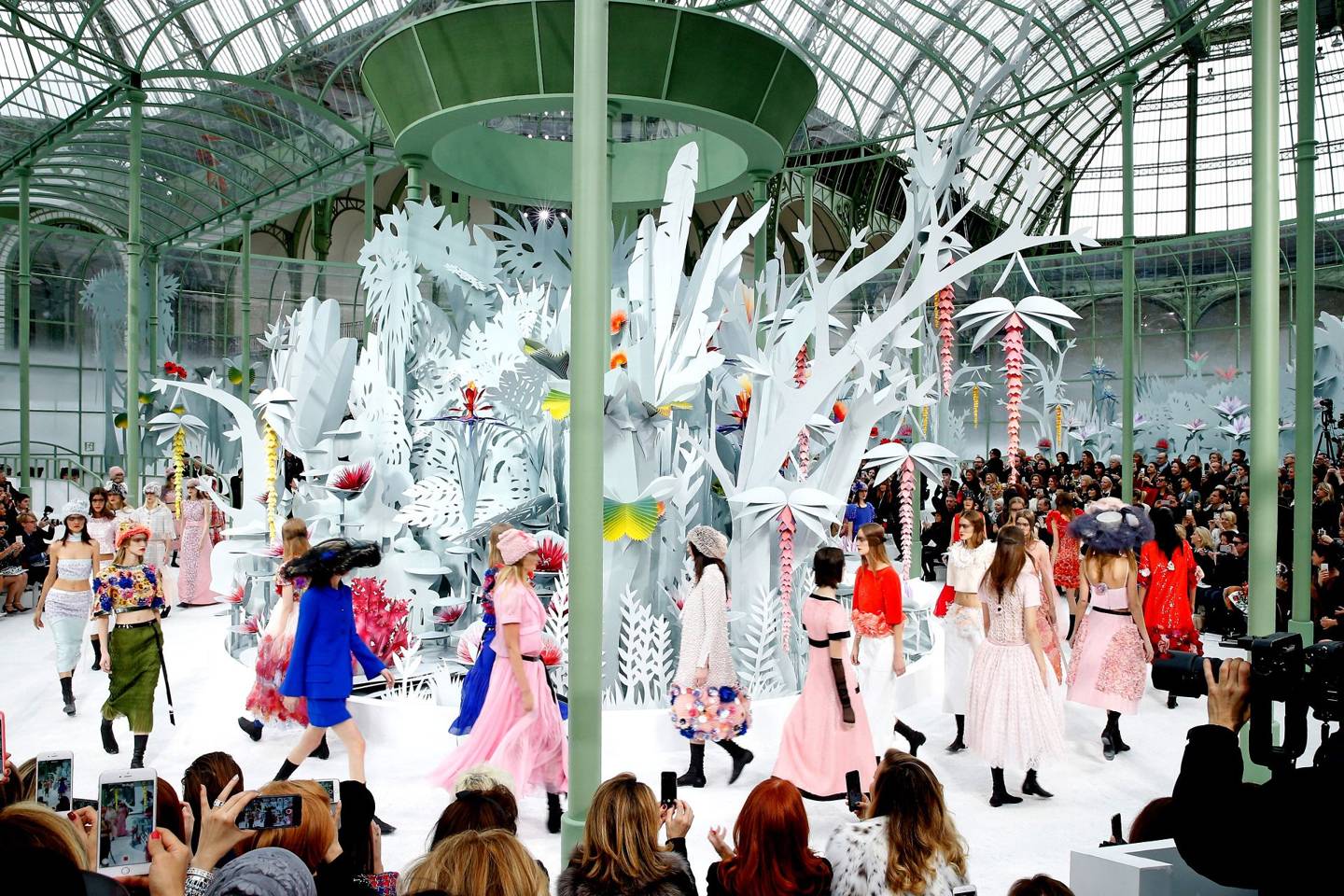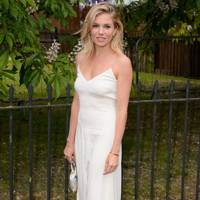Aitor Throup has always been something of a risk-taker when it comes to fashion - seen keenly in his work for G-Star where he is executive creative director and for which today he presents his first womenswear edit for the brand's third Raw Research collection. Conceived to create a platform where new constructions and innovation can happen with denim by deconstructing it, it is designed to "challenge how we typically approach design". But what does that mean in reality? And how does the Argentinian designer, known for his cutting-edge collaborations with fellow boundary-pushers Damon Albarn, Kasabian and the Hunger Games franchise, intend on making it something that means more than surface matter? More from the man himself...
How would you explain the Raw Research concept?
"Raw Research is our research lab within G-Star where we focus on denim innovation. We believe in the idea of innovation and research being about taking risks and creating an environment that even as a global brand allows us to make mistakes in the process. We believe that’s what can lead us to truly new thinking that challenges how we would typically approach design. As we continue this journey of exploration and experimentation, we continue to push ourselves to think of new ways to explore denim, and to suggest what jeans could be and mean when you look to the future."
How are you trying to push boundaries?
"With this deep understanding and respect for tradition being informed by our vast archive, we are trying to redefine and shift the conventions of denim. In the case of Raw Research III, this has resulted in us challenging and questioning the very nature of denim fabric. We have actually deconstructed denim itself and in doing so we are redefining what 'raw' means to us. We believe that denim is a material that can be seen as a metaphor for us as individuals because it grows, evolves and shapes itself to the wearer: it is a reflection of the wearer and their life. Ultimately, this conceptual approach to denim research and exploration within our innovation lab, leads us to create a range of prototypes every season that serve to inform newness in our general collection, and ultimately services the brand by providing new denim innovations."
How did you go about approaching the womenswear and how does it complement the existing menswear collections?
"Our approach to design is actually very instinctive from a product design perspective. In essence, we don’t approach womenswear design any differently to how we approach menswear design, because we are prioritising product design values first and foremost. As we intensified the level of development within the Raw Research lab and as our technical expertise and approach to engineering grew (in terms of details and constructions), we realised that we were actually developing components that were informing the general collection for both men and women. It’s really interesting that the product design elements, philosophy and values that we have been investing in, are actually non-gender-specific. They’re neutral values, but they are typically associated with a sense of masculinity.It’s really interesting that the product design elements, philosophy and values that we have been investing in, are actually non-gender-specific
We think about the idea of functionality, utility and transformability together with our continuous focus on the product design principle of concinnity (the harmony of line in product design). Those values directly inform our approach to unique product design in a womenswear context, through a womenswear filter with a feminine sensibility and understanding of volume and drape.
Introducing womenswear into the Raw Research collection also made us really interested in exploring the very essence of femininity, so that we could learn from that and perhaps influence the menswear with some of those learnings. It’s not just about taking the menswear learnings and putting them through a womenswear filter, but it’s also about having an understanding of womenswear and aligning that to influence the menswear. So what you are seeing are a lot of new volumes and silhouettes being developed that are learning from each other as well as classic womenswear cues - such as paper straw sun hats – influencing the aesthetic across both genders.
Where do you find your influences and how has this changed as you’ve gotten older?
"I’m never really looking for a source of influence, inspiration or some sort of external source of creative energy - it’s actually just the same continuous drive to tell stories through design, art and in this case through product design. I believe that truly timeless design can be created if an artist, a designer or a brand has something truly new to say, because you can create equally new ways of saying so. That’s what drives me; using art, design and product design to create narratives. What is particularly interesting to me is the notion of anatomy, creating narratives and indeed products that are constructed anatomically through design systems, physical layers and a layered process where the viewer can actually have a sense of the process that leads to the final result.I believe that truly timeless design can be created if an artist, a designer or a brand has something truly new to say
It’s extremely interesting to me that the idea of an anatomical approach to product design is a true connecting factor between my own approach as a designer and G-Star’s approach as a brand. I really believe that this sense of respect and focus on the human body, and a three-dimensional approach to design - particularly in denim innovation - is what has defined G-Star since the beginning and it is indeed that essence that attracted me to the brand in the first place. It doesn’t only mean anatomy in a physical sense where we are constructing things anatomically and ergonomically (for and around the human body), but also that we’re doing so in a way that strives to create products that are inherently human, that almost have a soul. That is my ongoing obsession, to create pieces that we have a connection with, because as human beings we sense that these pieces, like us, are anatomical beings. They have been constructed anatomically from the inside out, they have complexities, they have systems, they have layers and they aren’t just surface designs from the outside in - they are intricately constructed objects."
What are your views on getting influencers to wear the clothes you design and how important is having famous ambassadors and collaborators?
"Whenever you create something, there is an opportunity to connect that creation with a person or people who embody similar values. Culturally speaking, it’s very interesting to me when different creations or creators that express similar values through their own specialism and in their own way, come together. It’s really powerful and that’s arguably when we have seen pivotal moments in society and culture. At G-Star we really believe that through our approach as a brand, now and historically, we are speaking to a generation who is interested in doing things in new ways, as we take risks and aren’t afraid to redefine the conventions of a very specific industry. We are empowering the self-confidence of individuals by proving that we share a similar point of view, because we are also doing things our own way."
You have a diverse CV – how do your experiences feed into each other?
"Very early on, even when I was still studying, I was very conscious of the limitations that an industry can typically create around an individual. I was just as interested in drawing and sculpting, draping and pattern cutting, construction and engineering, as I was in music, film direction and graphic design. I saw all of those fields as intrinsically connected languages whereby all that I needed to do was to invest my time and energy to push myself to learn those fields in order to be able to create a message that was truly multi-faceted. I don’t have any interest in being primarily a clothing designer or primarily a film director or an illustrator – I want my specialism to be the message and concept rather than the medium.It’s great to be working at a time where the previous rules are being challenged
I truly think that design and art are simply ways of communicating without necessarily using linguistic or symbolic systems. The most powerful design and art is arguably communicating an emotion, resulting in causing an emotional effect on the viewer: something that happens instantly and in a much more powerful way than language typically allows.
What are the major differences in the fashion industry now to when you started out?
"I feel like my own stance within the industry is unchanged, I actually feel exactly the same now as when I started out, and I feel like I have the same level of uneasiness existing within that industry which is reflected by the fact that I’m equally interested and active in other industries. What’s also interesting is that my continuous approach of not subscribing to the traditional, standardised conventions of the fashion industry - such as presenting seasonally, the format of the catwalk or the idea of wholesaling in a typical structure - seems to be the most prominent definition of the current zeitgeist within the industry. It’s great to be working at a time where the previous rules are being challenged by more and more brands and designers, because it keeps us on our toes and it can lead us to achieve even greater things than if we were the only ones that were challenging those conventions."
What is your dream project to work on?
"Without a doubt I want to design the ultimate Batman suit. I think that they still haven’t got it right, and I’ve been working on it for a very long time. I would also love to redesign the astronaut suits for NASA."
How do you champion emerging talent?
"The vast majority of the people who have become part of my team within my own design studio have come through the internship program and I really believe in creating an environment that nurtures young talent. Also within G-Star, we have established a new structure for the design team whereby we now have a design assistant program in every product category which basically provides an entry point for young designers to enter the brand. In addition, we have collaborated with the Sandberg Institute on its Fashion Matters program in order to support fashion design students not just financially, but also with dedicated business and design workshops, or the space and equipment for the graduates’ final work photo shoot. It shows that as a company we dare to be vulnerable and put the question on the table of the role and future of the fashion industry and invest in talents that are eager to find new ways to be more sustainable in the broadest meaning of the word."
How do you want people to think of G-Star?
"As the denim brand that isn’t afraid to challenge conventions through innovation that is focused on research and exploration. As the denim brand that isn’t afraid of taking risks and particularly of making mistakes, which is ultimately what makes us human."
Raw Research III will be available around the world, from early December 2017.










































